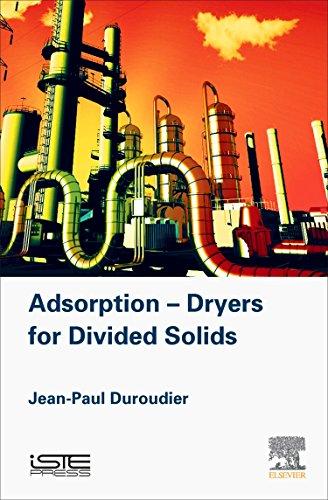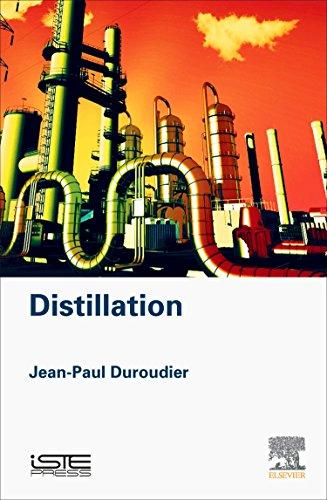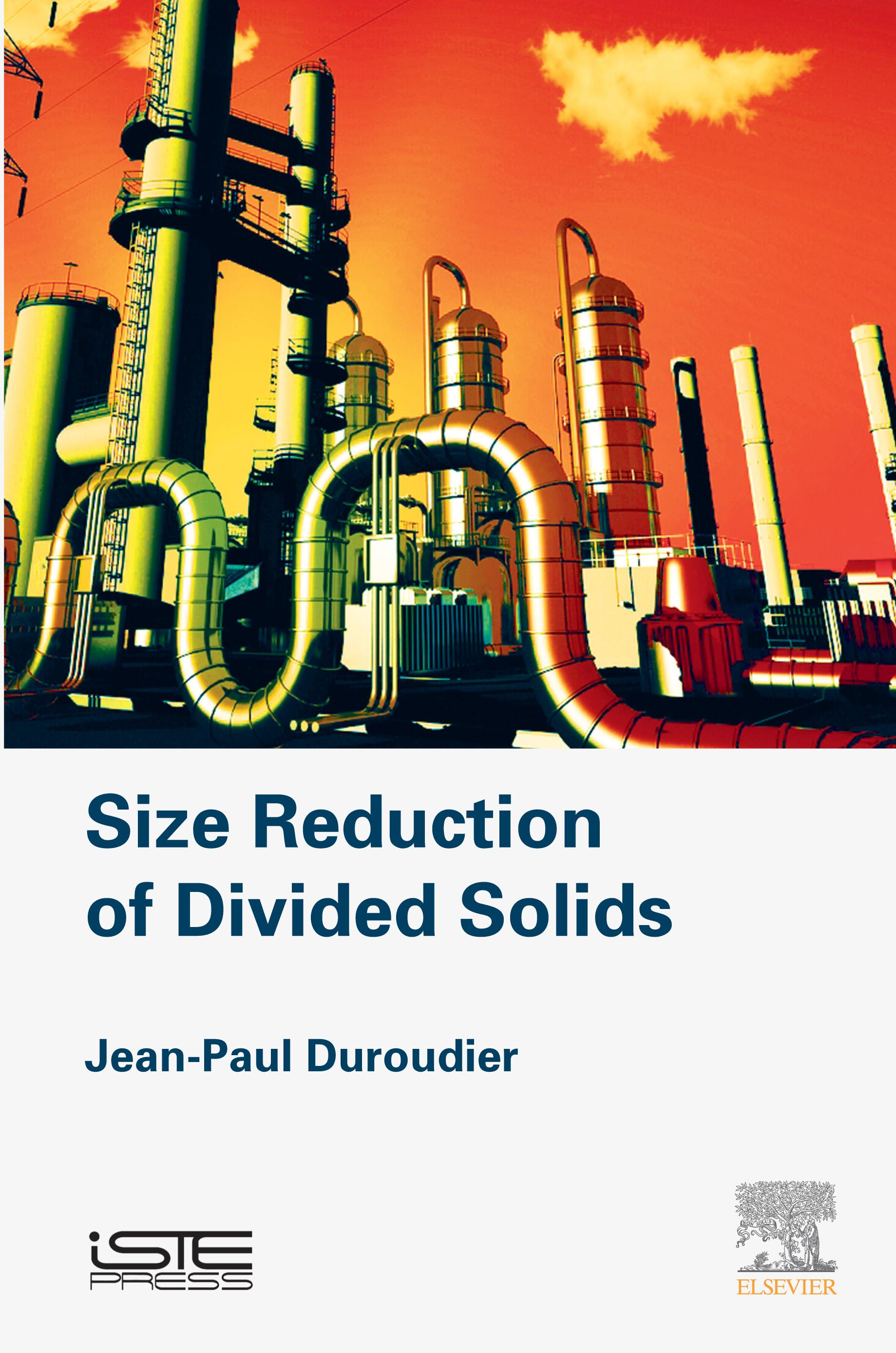https://ebookmass.com/product/size-reduction-of-divided-
Instant digital products (PDF, ePub, MOBI) ready for you
Download now and discover formats that fit your needs...
Adsorption-Dryers for Divided Solids 1st Edition Jean-Paul Duroudier
https://ebookmass.com/product/adsorption-dryers-for-dividedsolids-1st-edition-jean-paul-duroudier/
ebookmass.com
Distillation 1st Edition Jean-Paul Duroudier
https://ebookmass.com/product/distillation-1st-edition-jean-paulduroudier/
ebookmass.com
Fluid Transport: Pipes 1st Edition Jean-Paul Duroudier
https://ebookmass.com/product/fluid-transport-pipes-1st-edition-jeanpaul-duroudier/
ebookmass.com
Polymers for vibration damping applications B. C. Chakraborty
https://ebookmass.com/product/polymers-for-vibration-dampingapplications-b-c-chakraborty/
ebookmass.com
Size Reduction of Divided Solids
There are no such things as applied sciences, only applications of science.
Louis Pasteur (11 September 1871)
Dedicated to my wife, Anne, without whose unwavering support, none of this would have been possible.
3.6.2.
3.6.3.
3.7.
4.1.2.
4.1.3.
4.1.4.
4.1.8.
4.2.3.
4.2.4.
4.2.5.
4.2.6.
4.2.7.
4.2.8.
4.2.9.
4.2.10.
4.3.
4.3.1.
4.3.2.
4.3.3.
4.3.4.
4.3.5.
4.3.6.
Preface
The observation is often made that, in creating a chemical installation, the time spent on the recipient where the reaction takes place (the reactor) accounts for no more than 5% of the total time spent on the project. This series of books deals with the remaining 95% (with the exception of oil-fired furnaces).
It is conceivable that humans will never understand all the truths of the world. What is certain, though, is that we can and indeed must understand what we and other humans have done and created, and, in particular, the tools we have designed.
Even two thousand years ago, the saying existed: “faber fit fabricando”, which, loosely translated, means: “ c’est en forgeant que l’on devient forgeron” (a popular French adage: one becomes a smith by smithing), or, still more freely translated into English, “practice makes perfect”. The “artisan” (faber) of the 21st Century is really the engineer who devises or describes models of thought. It is precisely that which this series of books investigates, the author having long combined industrial practice and reflection about world research.
Scientific and technical research in the 20th century was characterized by a veritable explosion of results. Undeniably, some of the techniques discussed herein date back a very long way (for instance, the mixture of water and ethanol has been being distilled for over a millennium). Today, though, computers are needed to simulate the operation of the atmospheric distillation column of an oil refinery. The laws used may be simple statistical
correlations but, sometimes, simple reasoning is enough to account for a phenomenon.
Since our very beginnings on this planet, humans have had to deal with the four primordial “elements” as they were known in the ancient world: earth, water, air and fire (and a fifth: aether). Today, we speak of gases, liquids, minerals and vegetables, and finally energy.
The unit operation expressing the behavior of matter are described in thirteen volumes.
It would be pointless, as popular wisdom has it, to try to “reinvent the wheel” – i.e. go through prior results. Indeed, we well know that all human reflection is based on memory, and it has been said for centuries that every generation is standing on the shoulders of the previous one.
Therefore, exploiting numerous references taken from all over the world, this series of books describes the operation, the advantages, the drawbacks and, especially, the choices needing to be made for the various pieces of equipment used in tens of elementary operations in industry. It presents simple calculations but also sophisticated logics which will help businesses avoid lengthy and costly testing and trial-and-error.
Herein, readers will find the methods needed for the understanding the machinery, even if, sometimes, we must not shy away from complicated calculations. Fortunately, engineers are trained in computer science, and highly-accurate machines are available on the market, which enables the operator or designer to, themselves, build the programs they need. Indeed, we have to be careful in using commercial programs with obscure internal logic which are not necessarily well suited to the problem at hand.
The copies of all the publications used in this book were provided by the Institut National d’Information Scientifique et Technique at Vandœuvre-lèsNancy.
The books published in France can be consulted at the Bibliothèque Nationale de France; those from elsewhere are available at the British Library in London.
In the in-chapter bibliographies, the name of the author is specified so as to give each researcher his/her due. By consulting these works, readers may
Grinding: Principles and Theories
1.1. Grinding
1.1.1. Introduction
Chemistry uses bulk solids with average particle sizes ranging from 1 mm to 100 µm (fine), including particle sizes less than 20 µm (ultrafines).
For fibrous or plastic materials, splitting or shredding is used. However, for classic bulk solids (minerals, crystals, etc.), pressure or collisions are used and shearing is used less often.
Grinding equipment includes:
– a storage hopper for the bulk solid to be processed;
– a feed system using a screw conveyor, a conveyor belt or a vibrating conveyor;
– a comminution device;
– a classifier which generally uses a centrifugal force balanced by air (or water) friction;
– air decontamination equipment (usually dust extraction) and a fan for its removal.
Hixon [HIX 91] reviews different possible processes.
The wearing down of grinding surfaces requires part replacements (for example, plates and millstones).
The shape of the output obtained is important. As such, the gravel’s shape must be compact, that is, its three dimensions must be similar.
The average size of pigmented powders determines its color.
Wet grinding (after dispersion in a liquid) could lead to the flocculation of particles smaller than 10 µm.
Humidity greater than 50% (on-wet) liberates grains and improves their grinding.
The impact of temperature could be eliminated in the following ways, if it is too high:
– mix crushed ice into the feed system;
– cool the device with liquid nitrogen.
The risk of explosion could be eliminated by operating in a neutral atmosphere (CO2, N2, washed combustion gases).
1.1.2. Grain size
The size of the feed has the following order of magnitude: crushing 250 mm
first-stage grinding 75 mm
second-stage grinding 25 mm gas jet mill 0.1 mm
The reduction ratio is:
average size of feed R average size of the exiting output =
The ratio R has a magnitude of 6 for a crusher and could reach up to 400 for a fluid energy mill.
At the beginning (Figure 1.1), product size distribution is unimodal (curve 1). Then, it becomes bimodal (curves 2 and 3) and, finally, it becomes unimodal again (curve 4).
The fragments obtained from breaking grains are generally considerably much smaller than the grains being milled, which explains the position of the curve (4).
If variations in log10mj are represented in comparison with log10xj, we obtain the curve shown in Figure 1.2.
1.2. Granulometry of a product coming out of a ball mill
The frequency curve generally has a straight line portion AB and a “hump” at M. Sizes at this hump correspond to grains that are too large to fit between:
– two balls in a ball mill;
– two cylinders in a roller mill.
Rod mills are superior at breaking down the largest grains.
Figure
Figure 1.3. Striking grains with two rods
The rods hit the large grains while the smallest grains are not touched. The result is that the output exiting the rod mill (curve (2) of Figure 1.2) does not have the hump M of curve (1).
In addition, note that rods with a diameter of 2 cm could hit grains that 2 cm balls are unable to hit.
A steep slope for the line A’B shows less fines than in the line AB.
1.1.4. Heterogeneous rocks
Metamorphic rocks are extremely heterogeneous, especially if they contain a significant amount of mica (metamorphic rocks structure has been modified by pressure or temperature). Rocks exposed to weathering are also heterogeneous from the fact that their inter-granular surfaces have disintegrated (particularly in those with cemented grains). Shale is an example of a heterogeneous rock.
logx g logx i
In the fines region, we see a maximum M2 which corresponds to an average grain size x of rocks held together by a “cement” or pressure. The more the number of large grains in the rock, the more the maximum M2 shifts to the right.
If all the grains in the rock have a similar size, then the maximum M2 is very sharp. Some rocks display 2 or 3 maxima of the type M2.
Figure 1.4. Granulometry of a heterogeneous rock
Knowing that overflows R1 and R2 correspond to particle diameters x1 and x2, we can get the value of the two parameters n and b:
Let us recall the Gaudin–Meloy [GAU 62] formula:
These authors provide perspectives about fractures in a volume, on a surface or an edge.
1.2.4. The Harris distribution [HAR 69]
While the Schumann [SCH 40] and Rosin–Rammler [ROS 34] distributions provide only two parameters, Harris [HAR 69] proposed a three-parameter equation, which allows for a much closer rendering of results from grinding.
According to Harris, the underflow with a dimension x is given by:
Barbery [BAR 71] uses a regression method to determine the value of Harris’ parameters xo, s, r.
NOTE.–
Harris [HAR 69] proposes a representation system that includes: – an anamorphosis of P(x) on the ordinate; – a logarithmic scale for x/xo on the abscissa.
In this way (refer to author’s Figure 1), the function P(x) is represented by a straight line on a large part of the variation of this function.
1.2.5. Log-normal distribution
Epstein [EPS 48] explains that, if each grinding event splits a particle into two equal parts, the result would be a log-normal size distribution after a dozen or so events.
For a normal distribution, the frequency of the size x is:
For a log-normal distribution, we obtain the variable: Ln x σ
The total underflow is then:
This distribution is only used for the diameter of drops emerging from a crusher and is in no way applicable to grinding processes, except by Austin and Bagga [AUS 81a] for the selection function.







